Présentation
RÉSUMÉ
La compatibilité électromagnétique (CEM) est devenue un paramètre important à prendre en compte lors d'un projet industriel faisant intervenir de l'électronique de signal ou de puissance. Dans cet article, sont détaillés les principaux phénomènes de perturbations électromagnétiques naturelles et artificielles, comme la foudre, les décharges électrostatiques ou les activités industrielles. Sont également décrits les procédés d'analyse de la CEM : il s'agit ici d'analyses conduites sur chaque système constituant l'installation au moyen de la détermination de plusieurs paramètres, parmi eux le niveau de perturbations émises, le niveau d'immunité et les affaiblissements.
Lire cet article issu d'une ressource documentaire complète, actualisée et validée par des comités scientifiques.
Lire l’articleAuteur(s)
-
François COSTA : Emeritus Professor in Paris Est Créteil University - Former director and Researcher at the SATIE laboratory, ENS Paris-Saclay
INTRODUCTION
This article provides an introduction to electromagnetic compatibility (EMC). After presenting the notions of electromagnetic environment and compatibility, the main phenomena of natural and artificial electromagnetic disturbances are described, giving a few examples and considering the coupling of emitted disturbances (conducted and radiated) to their "victims". Until very recently, EMC has been approached from an experimental, even empirical angle, and it is now becoming necessary to predict EMC effects in equipment or systems by calculation. A few significant examples and some thoughts on simulation tools will help illustrate the methodologies specific to the EMC field.
This article is the first in a series dedicated to studying the various facets of this vast field, which concerns all low- and high-power electrical and electronic devices and systems, over a frequency range from a few hertz to a few tens of gigahertz (GHz). A number of articles are offered, based on the following general items:
-
EMC measurements and standards ;
-
transmission of conducted and radiated disturbances ;
-
electromagnetic (EM) effects of lightning ;
-
EMC in the field of high currents ;
-
EMC of electronic boards ;
-
methods and tools for conducted and radiated EMC simulations, from subsystems to complex systems ;
-
means of reducing electromagnetic interferences: filtering, shielding.
VERSIONS
- Version archivée 1 de févr. 2000 par Guy-Gérard CHAMPIOT
DOI (Digital Object Identifier)
Cet article fait partie de l’offre
Conversion de l'énergie électrique
(270 articles en ce moment)
Cette offre vous donne accès à :
Une base complète d’articles
Actualisée et enrichie d’articles validés par nos comités scientifiques
Des services
Un ensemble d'outils exclusifs en complément des ressources
Un Parcours Pratique
Opérationnel et didactique, pour garantir l'acquisition des compétences transverses
Doc & Quiz
Des articles interactifs avec des quiz, pour une lecture constructive
Présentation
3. Simulation-based approach to EMC
3.1 EMC CAD and simulation
The contribution of software tools has become increasingly widespread in the product or system design process. Figure 29 shows a simplified design flow: starting with a specification that defines the functional performance, mechanical topological constraints and standards to be met, a large part of the design is carried out using CAD (computer-aided design) tools. The automotive and aerospace industries are prime examples of this practice. However, EMC constraints are often not taken into account until the second phase, when a prototype exists on which EMC investigations can be applied.
However, for reasons of development time and cost, it is becoming increasingly necessary to take into account the EMC behavior of a system or a subsystem very early on in the design phase, in order to minimize development costs, especially when optimizing under multiple constraints. EMC constraints must therefore be integrated into the computer-aided design flow. The tools used to simulate the product's EMC behavior must therefore be compatible or able to exchange data with the simulation tools already used by the designer; they must be able to provide information on the "virtual" EMC behavior of the device with reference to standards or specifications given by the project manager.
The question of the simulation domain is an important one: EMC emission standards define maximum levels over a given frequency range; simulation in the frequency domain is therefore well suited, and is often cost-efficient in terms of calculation. However, the designer of an electrical device is also required to simulate functional aspects in the time domain ("circuit" simulation); functional models can therefore be made more complex to introduce the elements that determine EMC (parasitic elements, inductive or capacitive couplings, etc.). Simulation times quickly become prohibitive, as the time scales of the phenomena to be modeled become very dissimilar.
the representation of a MOSFET switching transient in a chopper supplying a DC motor requires a precise and complex model of this component, and a calculation step adapted to the duration of the phenomenon (a few nanoseconds). As a result, the chosen calculation step is very small and unsuitable for simulating phenomena on a larger time scale, linked to the functional aspects of the component:
-
on the MOSFET switching time-scale (100ns – 1 μs);
-
on the scale of regulation of external quantities (load current: a few 10 ms);
-
on the scale of the mechanical transient of the DC motor (a few seconds) associated with the mechanical application.
The designer is therefore faced with a dilemma of accuracy/simulation time and simulation data storage capacity.
Cet article fait partie de l’offre
Conversion de l'énergie électrique
(270 articles en ce moment)
Cette offre vous donne accès à :
Une base complète d’articles
Actualisée et enrichie d’articles validés par nos comités scientifiques
Des services
Un ensemble d'outils exclusifs en complément des ressources
Un Parcours Pratique
Opérationnel et didactique, pour garantir l'acquisition des compétences transverses
Doc & Quiz
Des articles interactifs avec des quiz, pour une lecture constructive
Simulation-based approach to EMC
BIBLIOGRAPHIE
-
(1) - DEGAUQUE (P.), HAMELIN (J.) - Compatibilité électromagnétique – Bruits et perturbations radioélectriques. - Collection technique et ingénierie, Dunod, ISBN 2-10-004209-2, 654 p. (2000).
-
(2) - CHAROY (A.) - Compatibilité électromagnétique. - Dunod Tech., Éditions de la radio, ISBN 2-10-001438-2, 679 p. (1992).
-
(3) - MARDIGUIAN (M.) - Manuel pratique de CEM. - Hermès Science Publications, 430 p. (2003).
-
(4) - CHAMPIOT (G.G.), BLANCHET (P.), BOURQUIN (P.), CAZAUDEBAT (H.), DEPARIS (P.A.), GUILLERY (P.), LEOST (J.Y.), MENDES (A.), OTT (R.), PANNIER (A.), REY (C.), WENDLING (J.), DELOUX (P.), DRUGEON (J.L.) - Les perturbations électriques et électromagnétiques – Conception et amélioration des installations industrielles et tertiaires. - Collection Electra – Dopee 85/EDF Centre français de l'électricité, ISBN 2-86995-018-76 – Prix Sadi-Carnot 1993, 16 références , 371 p. (1991).
-
(5) - PICHON (L.) - Compatibilité...
ANNEXES
Some sites offer the possibility of downloading trial or free versions of software.
https://www.3ds.com/products/simulia/cst-studio-suite
https://www.cadence.com/en_US/home/tools/system-design-and-analysis.html
http://femm.foster-miller.net/wiki/HomePage
https://www.analog.com/en/resources/design-tools-and-calculators/ltspice-simulator.html
https://web.altair.com/altair-student-edition
HAUT DE PAGE
Schneider Electric: https://www.se.com/fr/fr/download/
Telecommunications...
Cet article fait partie de l’offre
Conversion de l'énergie électrique
(270 articles en ce moment)
Cette offre vous donne accès à :
Une base complète d’articles
Actualisée et enrichie d’articles validés par nos comités scientifiques
Des services
Un ensemble d'outils exclusifs en complément des ressources
Un Parcours Pratique
Opérationnel et didactique, pour garantir l'acquisition des compétences transverses
Doc & Quiz
Des articles interactifs avec des quiz, pour une lecture constructive










